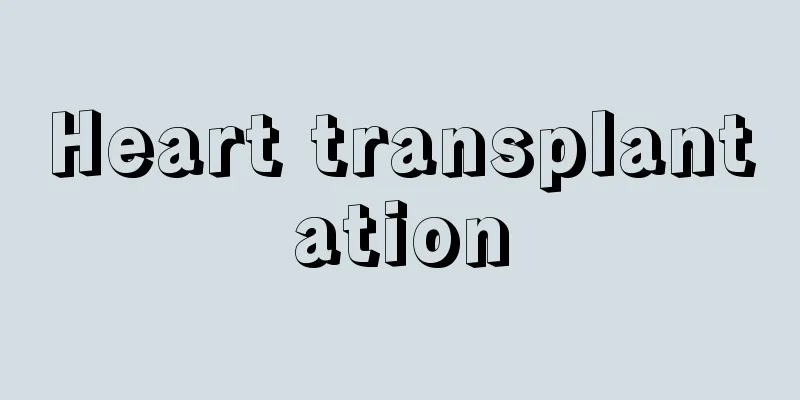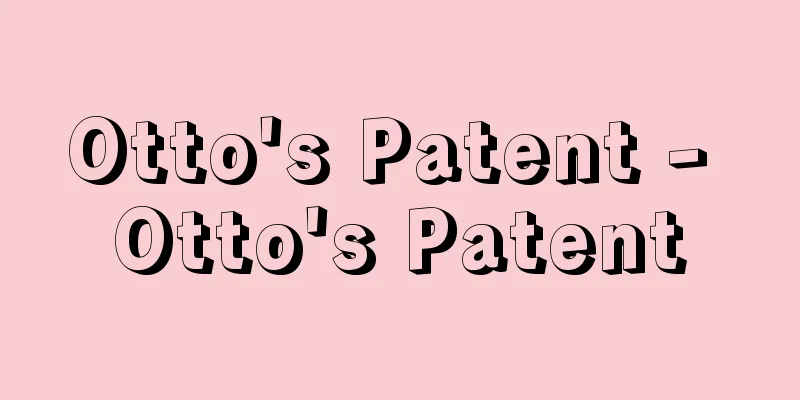Heart transplantation

|
(1) History of heart transplantation The first human heart transplant was performed in 1967 by Barnard et al. in South Africa (Barnard, 1967). The recipient survived for 18 days, but by 1968, heart transplantation had spread worldwide. In Japan, the so-called "Wada transplant" was performed at Sapporo Medical University in the same year, and although the recipient survived for 83 days, it was met with strong public criticism due to medical suitability and inadequate brain death determination. Furthermore, outcomes at some facilities were not as good as expected, and in the 1970s many facilities withdrew from heart transplantation. The availability of cyclosporine as an immunosuppressant in 1981 sparked a resumption of heart transplantation. In the same year, the International Society of Heart and Lung Transplantation was founded, which is now the International Society of Heart and Lung Transplantation (ISHLT), which manages a database of heart transplants around the world. (2) The Organ Transplant Law in Japan and its Revision Even today, in principle, brain death does not mean death in Japan. The old Organ Transplant Law was enacted in 1997 amid a variety of views on brain death. This law required potential donors to express their intention to donate while they were alive by using a will card to determine brain death, which in a sense limited the number of donor candidates. As a result, the number of heart transplants per year was limited to a maximum of 11. In addition, under the old law, organ donations were prohibited for people under the age of 15, and pediatric heart transplants were effectively impossible in Japan, so transplants overseas were frequently performed. In 2008, the International Society for Transplantation announced the Istanbul Declaration, which included a self-restraint on transplant tourism, and in 2010, the World Health Organization (WHO) also ratified it, leading to a sharp decline in the number of transplants overseas, especially in Europe. As a result, the Organ Transplant Law was revised in July 2009 and came into effect the following July 2010. The revised law opens the way for organ donation to be possible with the consent of the family after a brain death determination if there is no clear intention to refuse organ donation during life, and the number of heart transplants per year has soared to around 40 cases. The age limit for determining brain death has also been lifted, making pediatric transplants possible, but at present these remain extremely rare. For heart transplants only, a system has been introduced whereby donors under the age of 18 are given priority in matching with recipients who were under the age of 18 at the time of registration and are on the waiting list. The new law also provides for priority for donations by relatives, but this is unlikely to apply to heart transplants unless there is a very special coincidence. As of December 2011, there are nine facilities certified to perform heart transplants (Hokkaido University, Tohoku University, University of Tokyo, Saitama Medical University, Tokyo Women's Medical University, Osaka University, National Cerebral and Cardiovascular Center, Okayama University, and Kyushu University). (3) Indications for heart transplantation (Table 5-16-1) (Kinukawa, 2011) a. Diseases that are indications for heart transplantation Diseases that are indications for heart transplantation are the following severe heart diseases for which there is no hope of saving or prolonging life with conventional treatments. Dilated cardiomyopathy, dilated phase hypertrophic cardiomyopathy, restrictive cardiomyopathy, ischemic myocardial disease, congenital heart disease, and other heart diseases approved by the Heart Transplant Indications Review Committee of the Japanese Circulation Society and the Japanese Society of Pediatric Cardiology (including cardiac sarcoidosis, valvular disease, etc.) b. Medical requirements for eligibility: The target patients are those with heart failure that is in an incurable terminal state and requires long-term or repeated hospitalization for treatment, heart failure that has not improved from NYHA stage III or IV with conventional treatments including β-blockers and ACE inhibitors, or those with fatal severe arrhythmias that are ineffective with any of the currently available treatments. In light of the current state of transplantation in Japan, the preferred age has been considered to be under 60 years old, but this may be extended to around 65 years old in the future. In addition, from the perspective of social adaptation, sufficient consideration should be given to factors such as the ability to take medication and manage one's own lifestyle, mental stability, and family structure. c. Absolute exclusion conditions for heart transplantation Patients who meet any of the following conditions are ineligible for heart transplantation. Irreversible dysfunction of the liver and kidneys Active infections (including cytomegalovirus infection) Pulmonary hypertension (pulmonary vascular resistance is 6 Wood units or more even with the use of vasodilators or an artificial heart) Drug addiction (including alcoholic cardiomyopathy) Malignant tumors HIV (human immunodeficiency virus) antibody positive (4) Registration with the Japan Organ Transplant Network (JOT) After review and approval by the Japanese Circulation Society's Heart Transplant Indications Subcommittee, an application for registration with the JOT is submitted and the patient is officially registered as a transplant waiting patient. Registered recipients are classified into the following three statuses depending on their condition. Status 1: 1. A state requiring an auxiliary artificial heart 2. A state requiring an intra-aortic balloon pump 3. A state requiring artificial respiration 4. A state in which the patient is admitted to a critical care unit or other intensive care unit and requires continuous intravenous administration of cardiac inotropes such as catecholamines Status 2: Patients on waiting list who do not fall under Status 1 above Status 3: Patients on waiting list in Status 1 or Status 2 who have exclusion conditions (infection, cerebral infarction, etc.) There is a wide range for Status 2, but the general standard is that the maximum oxygen intake in a cardiopulmonary function test is 14 mL/kg/min or less. As of the end of November 2011, there were a total of 198 registered patients, of which 140 were men and 124 were in status 1. Reflecting the restriction that patients must be under 60 years of age, the overwhelming majority of patients have dilated cardiomyopathy, as shown in Figure 5-16-1. All recipients of heart transplants in Japan were in status 1, and the average waiting period until a heart transplant was 873 days (as of the end of December 2009). (5) Heart transplant surgery There are two main types of heart transplant procedures. The Lower-Shumway technique, in which both atria of the recipient are left partially intact and anastomosed, was initially developed. This technique has the advantages of being able to perform surgery in a relatively short time, being easy to use on recipients with anatomical abnormalities such as patients with congenital heart disease, being possible even in cases where there is a large mismatch in the diameter of the vena cava, such as in children, and being possible even in cases of right atrium adhesion, such as in cases of reoperation. However, it is said that there is a high rate of complications such as sick sinus syndrome and tricuspid regurgitation due to right atrium dilation and twisting, and that cardiac output is low due to uneven atrial contraction. To solve this problem, the bicaval technique, in which anastomoses are made at the level of the superior and inferior vena cava, has recently been adopted more and more often. (6) Immunosuppressive therapy and rejection after heart transplantation a. Immunosuppressive therapy after heart transplantation A triple combination of steroids, a calcineurin inhibitor, and a nucleic acid synthesis inhibitor is generally used. The calcineurin inhibitor used is cyclosporine or tacrolimus, and the nucleic acid synthesis inhibitor used is mycophenolate mofetil (MMF). The dose of the calcineurin inhibitor is adjusted according to the progress after transplantation while measuring trough levels. Recently, everolimus, a mammalian target of rapamycin (mTOR) inhibitor, has become available, and further evidence is awaited. b. Rejection: The donor's heart is recognized as non-self, and the recipient's lymphocytes and antibodies attempt to destroy the transplanted organ. There are three types of rejection: acute lymphocytic (cellular) rejection, which occurs early after transplantation and causes damage to the myocardium; humoral rejection, which causes a sudden deterioration in hemodynamics as antibody-related rejection; and chronic rejection, which appears as coronary artery lesions after several months. Myocardial biopsy is the most reliable method for definitively diagnosing acute rejection, and is an essential test if rejection is suspected. Myocardium is usually taken from the right ventricular septum, and the grade of rejection is determined based on the findings of the biopsy tissue as follows: Grade 0: no signs of rejection, Grade 1R: lymphocytic infiltration into the interstitium or perivascular space and myocardial damage up to one site, Grade 2R: lymphocytic infiltration in two or more sites and myocardial damage (Figure 5-16-2A), Grade 3R: diffuse lymphocytic infiltration and myocardial damage, sometimes accompanied by edema, bleeding, and vasculitis. Grades 0 to 1 are managed by increasing the dose of calcineurin inhibitors, etc. Grades 2 to 3 are treated with steroid pulse therapy. A tissue diagnosis of humoral rejection is often staining for C4d, a component of the complement system. Treatment involves multidisciplinary therapy, primarily plasma exchange. Unlike atherosclerosis, cardiac allograft vasculopathy (CAV) after heart transplantation often results in diffuse concentric intimal thickening. According to data from the ISHLT, the incidence rate is estimated at 7% per year. For this reason, stenosis is often not detected by standard coronary angiography, which is why intravascular ultrasound is essential for follow-up after transplantation (Figure 5-16-2B). Everolimus may inhibit the progression of CAV, but there is no established treatment. (7) Long-term outcomes of heart transplantation (Hertz et al., 2011) According to the ISHLT registry, approximately 3,500 heart transplants have been performed worldwide. Of these, North America accounts for over 2,000, followed by Europe with just under 1,000, and other regions still have fewer cases. Figure 5-16-3 shows the prognosis curve after heart transplantation. Thirty years have passed since cyclosporine became available in the 1980s, and the prognosis curve has been gradually moving upwards every decade. However, this is mostly due to improvements in postoperative care, and it can be said that there has been no major change in long-term post-transplant care. The most common causes of death 5 to 10 years after surgery are malignant tumors, graft failure, CAV, and infections, and many of these are considered to be side effects of immunosuppressants or cannot be solved by existing immunosuppressants. Skin cancer is the most common malignant tumor. However, transplant recipients have overwhelmingly been Caucasian, and it is unclear whether this is the case for Japanese people as well. A characteristic malignant tumor after transplantation is posttransplant lymphoproliferative disorder (PTLD). This is thought to be an EB virus-related disease and often occurs in the digestive tract. It has been reported that everolimus is effective against PTLD. Meanwhile, in Japan, as of December 2011, a total of 120 heart transplants have been performed, of which 51 have been performed since the revised law came into effect in July 2010. Although there is very little data available on the long-term prognosis of heart transplants in Japan, it is very good. As of July 2010, the one-year survival rate was 98.6%, and the five-year survival rate was 95.6%. As of December 2011, only four of the 120 transplant recipients have died. [Kinukawa Koichiro] ■ References Barnard CN: The operation. A human cardiac transplant: an interim report of a successful operation performed at Groote Schuur Hospital, Cape Town. S Afr Med J, 41:1271-1274, 1967. Hertz MI, Aurora P, et al: Scientific Registry of the International Society for Heart and Lung Transplantation. J Heart Lung Transplant. 30:1071-1132, 2011. Koichi Kinukawa: Indications and eligibility criteria for heart transplantation, exclusion criteria and contraindications. Heart Transplantation (edited by Akira Matsuda, edited by Shinichi Nunoda and Norihide Fukushima), pp111-114, Springer Japan, Tokyo, 2011. Indications for heart transplantation Table 5-16-1 Breakdown of underlying diseases of patients waiting for heart transplants registered with the Japan Organ Transplant Network "> Figure 5-16-1 Outcomes of adult heart transplants from the International Society for Heart and Lung Transplantation Registry "> Figure 5-16-3 Source : Internal Medicine, 10th Edition About Internal Medicine, 10th Edition Information |
|
(1)心臓移植の歴史 ヒトにおける心臓移植の第一例目は1967年南アフリカのBarnardらによるとされる(Barnard,1967).そのレシピエントは18日間の術後生存であったが,1968年には世界中に心臓移植手術が広まることとなった.わが国においても同年札幌医科大学においていわゆる「和田移植」が行われ,83日間生存したものの,医学的適応や脳死判定の不備などから世論の激しい非難を浴びる結末となった.また一部の施設以外では成績が思ったほど向上しなかったこともあり,1970年代には多くの施設が心臓移植から撤退した.1981年にシクロスポリンが免疫抑制薬として使用可能となったことは心臓移植再開の火付け役となった.同年,国際心臓移植学会が設立され,それは現在国際心肺移植学会(International Society of Heart and Lung Transplantation:ISHLT)に受け継がれ,世界中の心臓移植のデータベース管理を行っている. (2)日本における臓器移植法とその改正 わが国において脳死は現在でも原則として人の死ではない.脳死に対してさまざまな見解があるなかで旧臓器移植法が1997年に制定施行された.この法律は脳死判定に際してドナーとなり得る人本人の意思表示カードによる生前の提供意思表明を必要としたもので,ある意味ドナー候補を限定する内容となっていた.このため,年間心臓移植数は最大11例にとどまっていた.また旧法では15歳未満の臓器提供は禁止されており,小児の心臓移植は事実上日本では行えないシステムであったため,渡航移植が頻繁に行われていた.2008年国際移植学会による移植ツーリズム自粛を含んだイスタンブール宣言が発表され,2010年WHO(世界保健機関)もこれを批准し,ヨーロッパを中心に渡航移植受け入れが激減した.このこともあり,2009年7月に臓器移植法が改正され,翌2010年7月施行された.改正新法は臓器提供への生前の拒否の意思が明らかでない場合は家族の同意で脳死判定から臓器提供可能となる道が開かれ,年間の心臓移植数が40症例前後と急増した.また脳死判定可能な年齢も制限が撤廃され,小児移植の可能性が出てきたものの,現時点ではきわめて少数例にとどまっている.なお,心臓移植に限り18歳未満のドナーは登録時18歳未満で待機中のレシピエントに優先的にマッチングするシステムも始まった.新法では親族優先提供という事項もあるが,心臓移植についてはよほどの偶然がないかぎり適用されるものではないであろう.心臓移植実施認定施設は2011年12月現在,9施設である(北海道大学,東北大学,東京大学,埼玉医科大学,東京女子医科大学,大阪大学,国立循環器病研究センター,岡山大学,九州大学). (3)心臓移植の適応(表5-16-1)(絹川,2011) a.心臓移植の適応となる疾患 心臓移植の適応となる疾患は従来の治療法では,救命ないし延命の期待がもてない以下の重症心疾患とする. 拡張型心筋症・拡張相の肥大型心筋症・拘束型心筋症・虚血性心筋疾患・先天性心疾患・その他日本循環器学会および日本小児循環器学会の心臓移植適応検討会で承認する心臓疾患(心サルコイドーシス,弁膜症などを含む) b.適応の医学的要件 不治の末期的状態にあり,長期間または繰り返し入院治療を必要とする心不全,β遮断薬およびACE阻害薬を含む従来の治療法ではNYHAⅢ度ないしⅣ度から改善しない心不全,または現存するいかなる治療法でも無効な致死的重症不整脈を有する症例を対象とする.なお,当座のわが国の移植事情をふまえて年齢は60歳未満が望ましいとされてきたが,今後65歳程度をめどに延長される可能性がある.また,社会的適応の観点から服薬や生活の自己管理能力,精神的安定度,家族構成なども十分検討すべきである. c.心臓移植の絶対的除外条件 下記の条件を合併する場合は心臓移植の適応とならない. 肝臓,腎臓の不可逆的機能障害活動性感染症(サイトメガロウイルス感染症を含む) 肺高血圧症(肺血管抵抗が血管拡張薬または補助人工心臓を使用しても6 Wood 単位以上) 薬物依存症(アルコール性心筋疾患を含む) 悪性腫瘍 HIV(human immunodeficiency virus)抗体陽性 (4)日本臓器移植ネットワーク(Japan Organ Transplant Network:JOT)への登録 日本循環器学会心臓移植適応小委員会の審査承認を経た後,JOTへ登録申請を行い,移植待機患者として正式に登録される.登録されたレシピエントはその状態により下記の3つのステータスに分類される. ステータス 1: ① 補助人工心臓を必要とする状態 ② 大動脈内バルーンポンプを必要とする状態 ③ 人工呼吸を必要とする状態 ④ 集中治療室などの重症室に収容されていて,かつカテコールアミンなどの強心薬の持続点滴投与が必要な状態 ステータス 2:待機中の患者で,上記の状態1に該当しないもの ステータス 3:ステータス 1またはステータス2で待機中に,除外条件(感染症・脳梗塞など)を有する状態ステータス 2については幅が広いが,おおむね心肺機能検査で最大酸素摂取量が14 mL/kg/分以下であることを基準としている. 2011年11月末現在登録患者総数198名,うち男性140名,ステータス 1が124名,となっている.60歳未満という制限を反映して図5-16-1に示すように拡張型心筋症が圧倒的に多い.わが国において心臓移植を受けたレシピエントはすべてステータス 1であり,心臓移植までの平均待機日数は873日(2009年12月末)であった. (5)心臓移植手術 心臓移植の術式は大きく分けて2種類である.レシピエントの両心房を一部残して吻合するLower-Shumway法が当初開発された.この方式は手術時間が比較的短くできること,先天性心疾患患者のような解剖学的異常のあるレシピエントでも対応しやすいこと,小児例など大静脈径のミスマッチが大きくても可能なこと,再手術例など右心房の癒着があっても可能なこと,などの利点があるが,一方右心房の拡張やねじれを生じて洞不全症候群や三尖弁閉鎖不全を合併する率が高く,心房収縮が一様でないため心拍出量も低めであるとされている.この点を解消するため最近では上下大静脈レベルで吻合するbicaval法が採用されることが多くなってきている. (6)心臓移植後の免疫抑制療法と拒絶反応 a.心臓移植後の免疫抑制療法 ステロイド,カルシニューリン阻害薬(calcineurin inhibitor),核酸合成阻害薬の3剤併用が一般的である.カルシニューリン阻害薬はシクロスポリンまたはタクロリムス,核酸合成阻害薬はミコフェノール酸モフェティル(MMF)を使用する.カルシニューリン阻害薬はトラフ値を測定しながら移植後の経過に応じて用量を調節する.最近,mammalian target of rapamycin(mTOR)阻害薬であるエベロリムスが使用可能となり,今後のエビデンスの集積が待たれる. b.拒絶反応 ドナーの心臓が非自己と認識され,レシピエントのリンパ球や抗体などの作用によって移植された臓器を破壊しようとする拒絶反応には,リンパ球性(細胞性)拒絶として移植後早期に起こり心筋に傷害を起こす急性拒絶反応と,抗体関連性拒絶として急激な血行動態の悪化をもたらす液性拒絶反応と,数カ月以降に冠動脈病変として現れる慢性拒絶反応がある.急性拒絶反応の確定診断は心筋生検が最も信頼度が高く,拒絶反応が疑われた場合には心筋生検は必須の検査である.通常右室中隔から心筋を採取し,生検組織の所見により拒絶のグレードを下記のように判定する. グレード0:拒絶の所見なし,グレード1R:1部位までの間質または血管周囲へのリンパ球の浸潤と心筋傷害,グレード2R:2カ所以上のリンパ球浸潤と心筋傷害(図5-16-2A),グレード3R:びまん性のリンパ球浸潤と心筋傷害,ときに浮腫,出血,血管炎を伴う.グレード0〜1では,カルシニューリン阻害薬の増量などで対処する.グレード2〜3の場合,ステロイドパルス療法が施行される. 液性拒絶の組織診断として補体の1つであるC4dが染まることが多いとされている.治療は血漿交換を主体とした集学的治療を行う. 心移植後冠動脈病変(cardiac allograft vasculopathy :CAV)は多くの場合粥状硬化と異なり,びまん性に同心円状に内膜肥厚をきたすことが多い.ISHLTのデータでは毎年7%ずつ発生しているとされる.そのため,通常の冠動脈造影では狭窄が発見できないことも多く,これが移植後のフォローアップに血管内超音波が欠かせない理由である(図5-16-2B).エベロリムスがCAVの進行を抑制する可能性はあるが,確立された治療法はない. (7)心臓移植の遠隔成績(Hertzら,2011) ISHLTのレジストリーによれば,世界中でおよそ3500件程度の心臓移植が行われている.そのうち北米が2000件以上を占め,ついでヨーロッパが1000件弱であり,その他の地域はまだ少ないことがわかる.心臓移植後の予後曲線を図5-16-3に示す.シクロスポリンが使用可能となった1980年代以降約30年経過し,10年ごとの予後曲線は少しずつ上方に推移しているが,これはよくみれば術後管理の向上による部分がほとんどで,長期的な移植後管理に関する部分は大きな変化がないともいえる.死因の代表的なものは術後5〜10年をとると1位が悪性腫瘍,2位がグラフト不全,3位がCAV,4位が感染症となっており,既存の免疫抑制薬では解決できないまたは免疫抑制薬の副作用と考えられるものが多くあがっている.悪性腫瘍は皮膚癌が多い.しかし,移植対象者はこれまで圧倒的に白色人種が多く,日本人においても同様であるかどうかは不明である.移植後に特徴的な悪性腫瘍に移植後リンパ増殖性疾患(posttransplant lymphoproliferative disorder:PTLD)がある.これはEBウイルス関連疾患とも考えられるもので,消化管での発生が多い.PTLDに対してエベロリムスが有効との報告がある. 一方,日本において2011年12月現在心臓移植数は累計で120例,うち51例が2010年7月の改正法施行後以降に行われている.わが国における心臓移植の長期予後はデータ数としてきわめて少ないながら,非常に良好である.1年生存率98.6%,5年生存率95.6%というのが2010年7月時点での予後である.2011年12月現在,120名の移植レシピエントのうち死亡は4名のみである.[絹川弘一郎] ■文献 Barnard CN: The operation. A human cardiac transplant: an interim report of a successful operation performed at Groote Schuur Hospital, Cape Town. S Afr Med J, 41:1271-1274, 1967. Hertz MI, Aurora P, et al: Scientific Registry of the International Society for Heart and Lung Transplantation. J Heart Lung Transplant. 30:1071-1132, 2011. 絹川弘一郎:心臓移植の適応疾患と適応基準,除外基準・禁忌.心臓移植(松田 暉監修,布田伸一・福嶌教偉編),pp111-114,シュプリンガー・ジャパン,東京,2011. 心臓移植の適応"> 表5-16-1 日本臓器移植ネットワークに登録された心臓移植待機患者の基礎疾患の内訳"> 図5-16-1 国際心肺移植学会のレジストリーによる成人の心臓移植の予後"> 図5-16-3 出典 内科学 第10版内科学 第10版について 情報 |
Recommend
Charles du Fresne, seigneur du Cange
1610‐88 A French Greek scholar. His real name was ...
Pilgrimage of Grace
A rebellion occurred in the north of England unde...
Pocket warmer ash - Pocket warmer
〘 noun 〙 A solid fuel that is lit and placed in a ...
Khnum
…The Greek Orphic myth tells us that Aithēr, the ...
Parliament Act
This law was enacted in 1911 to restrict the power...
Monilia disease
This disease of apples is caused by Monilinia mal...
Sand collar
...This is called a sand collar (illustration), a...
Haffen, K.
…Furthermore, in 1929, Fell perfected the watch g...
Basin - bonchi (English spelling) basin
A depression surrounded by higher crust. Basins c...
Gillen de Castro - Gillen de Castro
...He created a romantic drama of manners called ...
Poppy - poppy
Scientific name: Papaver somniferum Plants. Annual...
Linked Records
A novel by Koda Rohan. Published in Nihon Hyoron i...
Oiroto - Oiroto
...The northern group was formerly called the For...
promoter
...(2) There is a base sequence that regulates th...
outlaw
...It is also suggestive that in ancient times th...






![Aru [Islands] - Aru](/upload/images/67cadd30011b9.webp)


